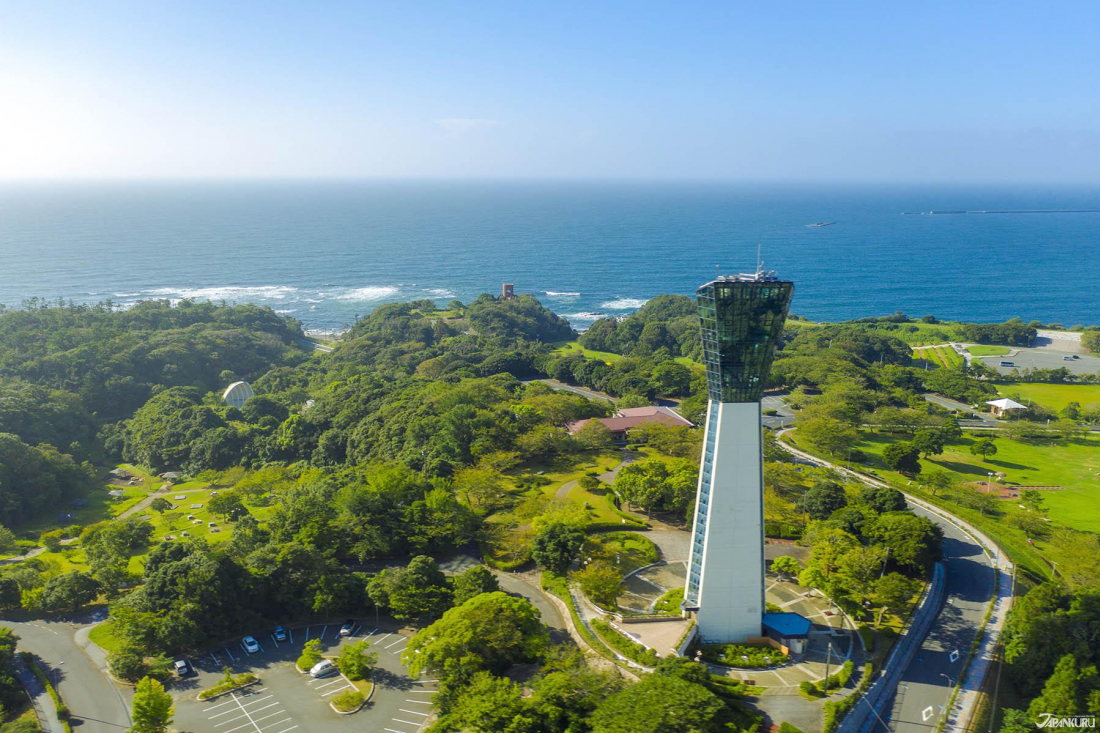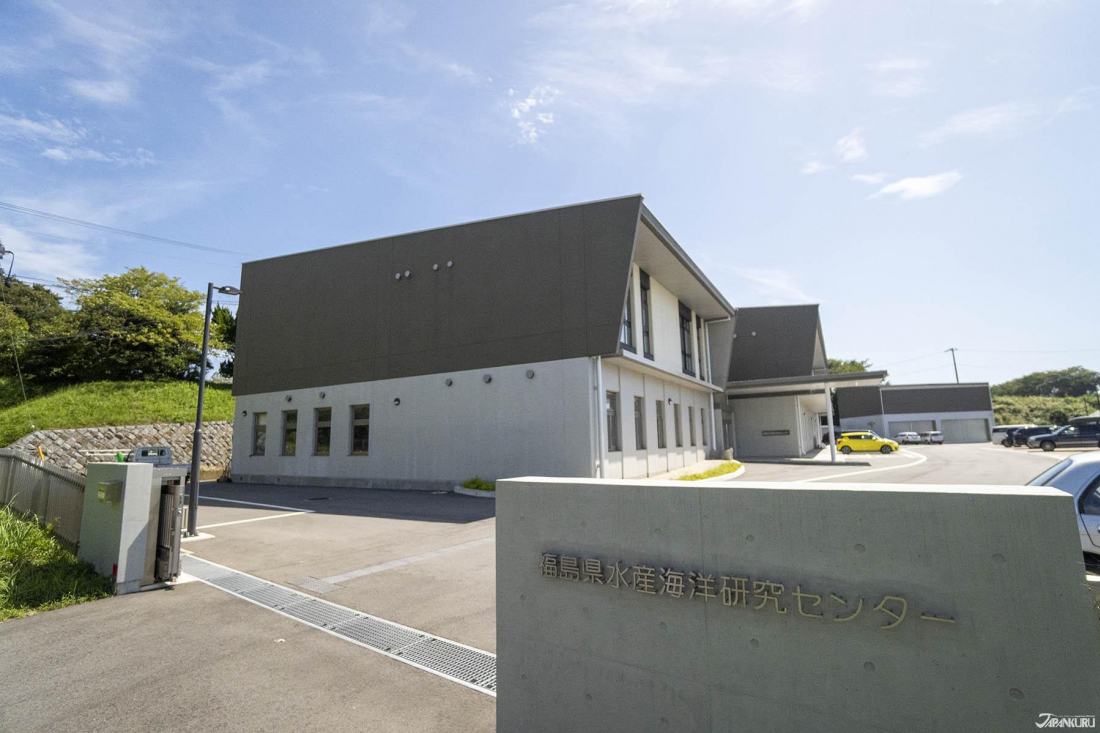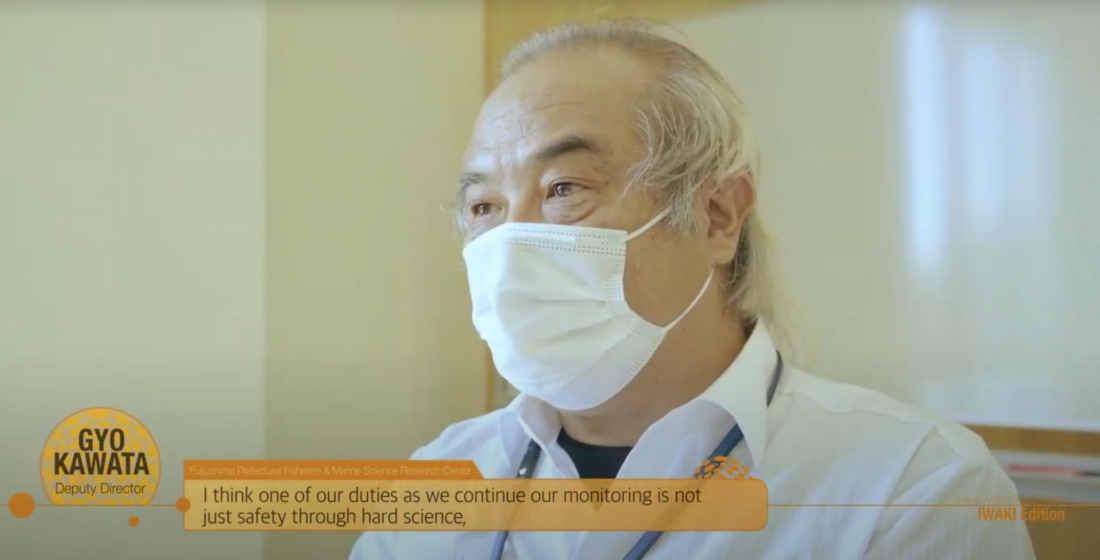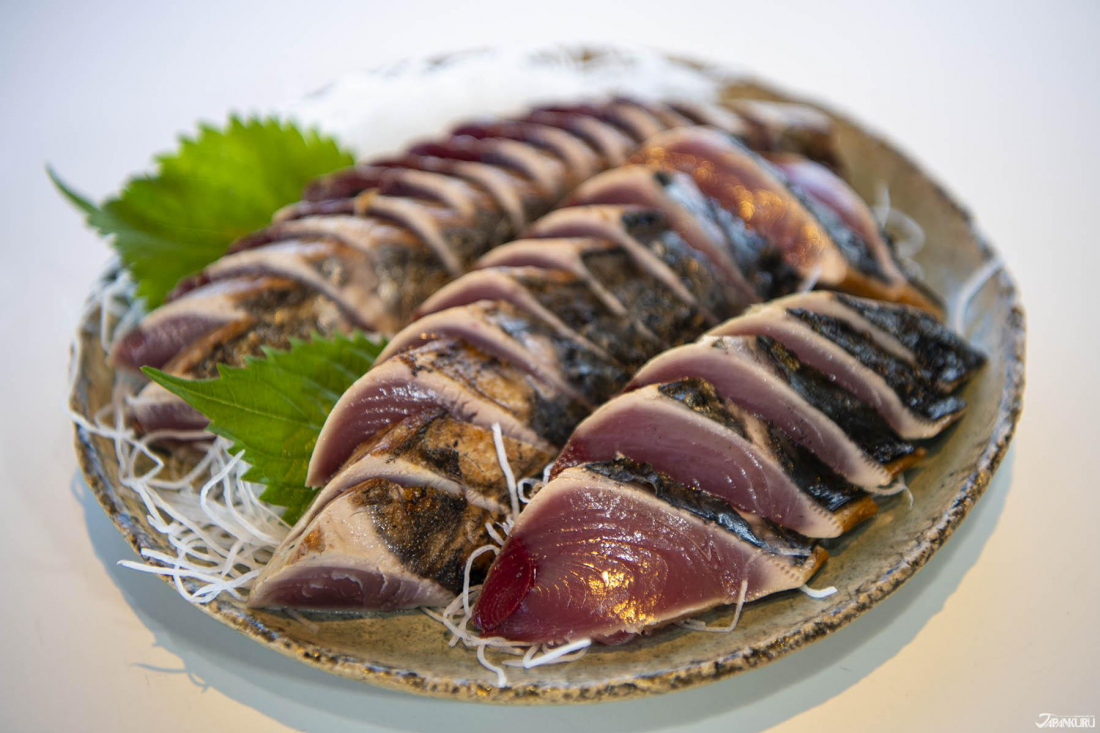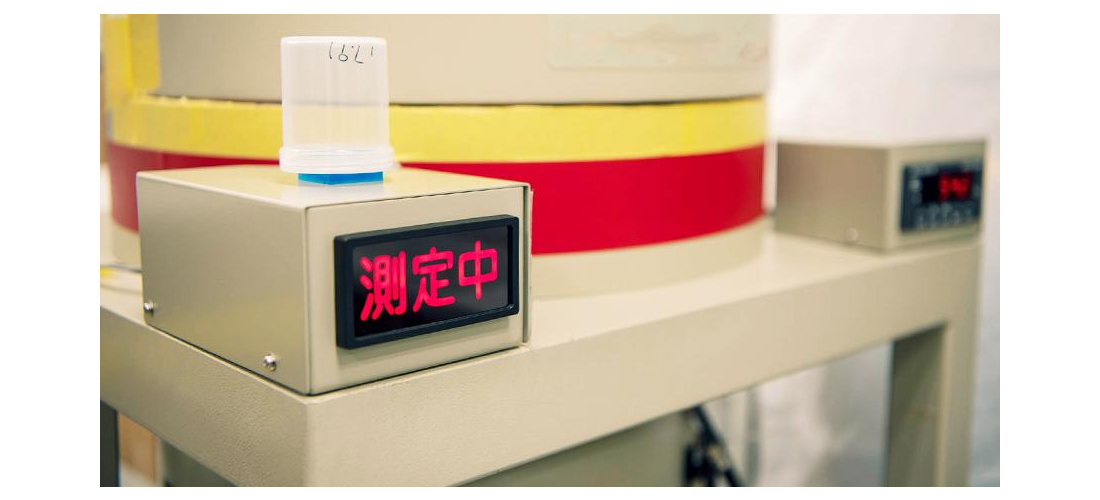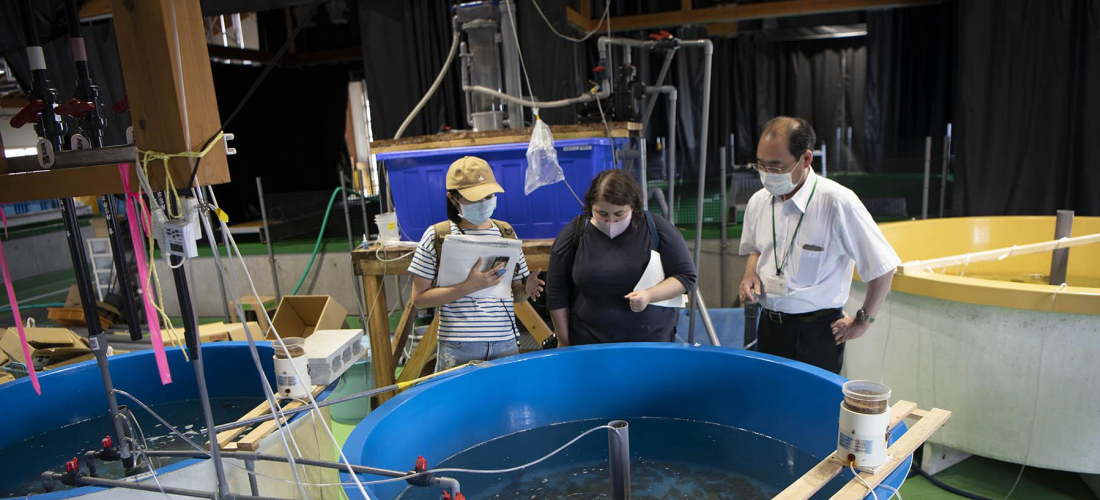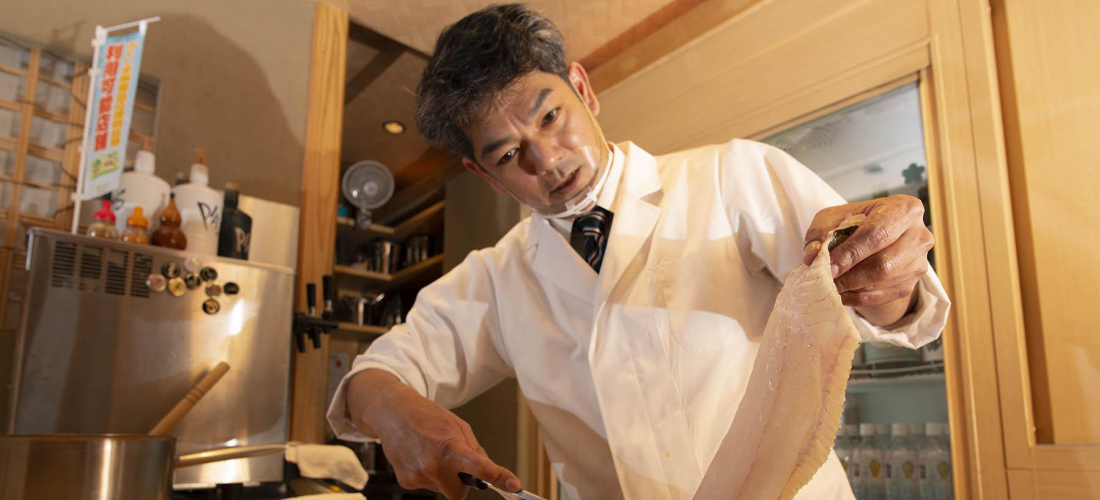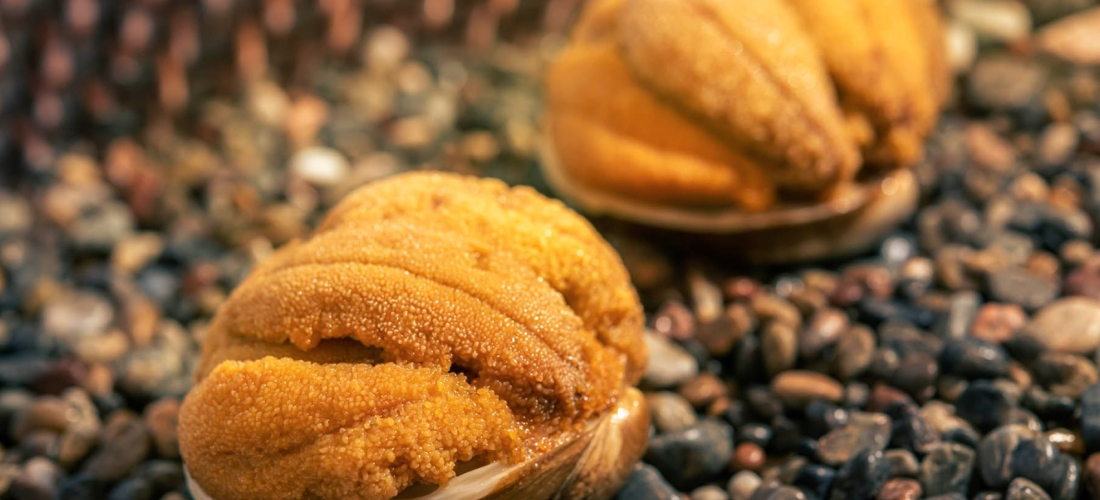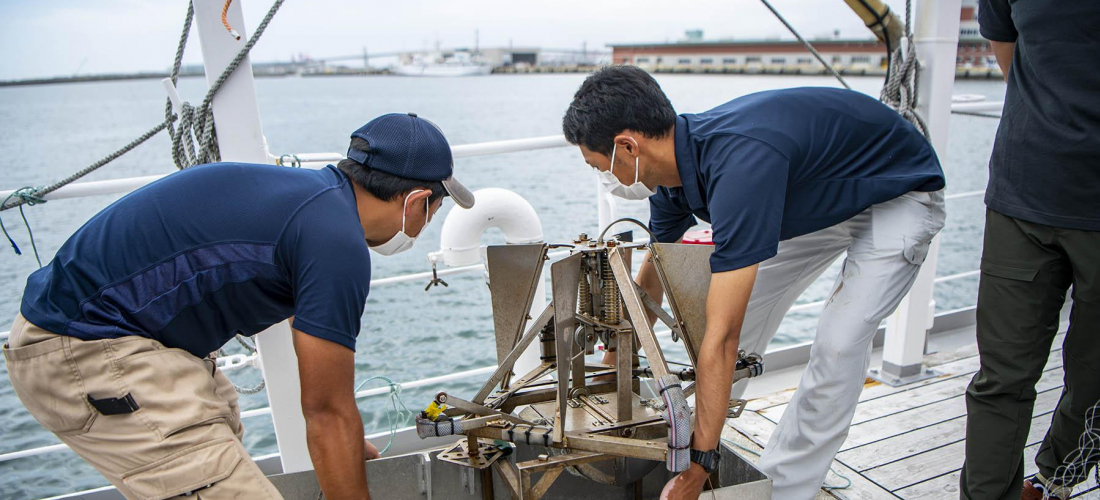
CONTENTS
On March 11th, 2011, the Tohoku earthquake set off an enormous tsunami that assailed the Fukushima Daiichi Nuclear Power Plant, causing serious damage to the ocean off the coast. In the ten years since then, Fukushima’s local government and fishery workers have come together to try and restore the once famous fishing grounds of the “Shiome Sea,” performing monitoring tests, screening tests, and continuing research on the local research environment at the Fisheries and Marine Science Research Center.
Is Fukushima’s Ocean Safe? Answers from the Fisheries and Marine Science Research Center
In previous articles from our Joban-mono series, we've discussed the safety of fish and other marine products in Fukushima today, and hopefully we've provided a basis for understanding the monitoring and screening tests that ensure food safety throughout the prefecture. Thanks to the hard work of Fukushima's fishery workers, the fishing industry is growing again, and people around Japan are once again finding confidence in Fukushima's famous Joban-mono seafood.
Fukushima Prefecture isn't just looking at the radiation levels in fish and seafood, however. The prefecture is constantly monitoring and investigating any changes in local radiation levels, along with the status of the local undersea environment, including both seawater and the sediment on the sea floor. This scientific research and the resulting data form the scientific basis for reports that the ocean off of Fukushima's coast has returned to safety in the years following the nuclear disaster, and these scientific results are connected to the revival of Fukushima's fishery businesses. This research, and the scientists who carry it out, can be found at Fukushima Prefectural Fisheries and Marine Science Research Center, next to Misaki Park in the city of Iwaki.
In 2018, the Fukushima Prefectural Fisheries and Marine Science Research Center was reorganized and renamed, and in 2019 it was reestablished as the center it is now, with an increased focus on radiation research. The facility is at the core of Fukushima Prefecture's fishery research and testing, together with institutions like Soma's Research Institute of Fisheries Resources and the Fukushima Prefectural Inland Water Fisheries Experimental Station in Inawashiro, which all study the current status of Fukushima's ocean waters, rivers, and lakes, performing a vital role in Fukushima's projects for rebuilding the local fishing industry.
The Fisheries and Marine Science Research Center is split into three departments, focusing on the marine fishing industry, the fishing grounds environment, and radiation research. Focusing in on the theme of Joban-mono, when the Japankuru team visited the center, we spent our time with the Radioactivity Research Department. This department investigates and studies radioactive material affecting the fishing industry and the local marine environment, any connections that could be found between the radiation and local marine life ecology or distribution, and the changing concentrations of local radioactive material over time.
Testing Marine Organisms for Radiation (Monitoring Tests)
In our previous article on monitoring and screening testing, we went over all the work done at the Fukushima Agricultural Technology Center to monitor agricultural and marine products. Scientists at the Fukushima Prefectural Fisheries and Marine Science Research Center perform sample collection and preparation for Fukushima's monitoring tests, along with analysis of the data that comes from those same tests. The results and analysis accumulated at the center is used for research concerning the radiation in fish caught in the region of Fukushima's coast (the Sanriku Coast), and also used to identify potentially important anomalies in smaller regions along the coastline.
To measure and test for radiation, the Fisheries and Marine Science Research Center is equipped with high-precision high-spec machines, and the center maintains a research vessel that surveys the local marine environment and investigates fishing grounds. The center doesn't just receive fish samples from fishing boats, they also use the research vessel to retrieve samples for monitoring tests and research.
The monitoring results from the Fukushima Prefectural Fisheries and Marine Science Research Center and Fukushima Agricultural Technology Center, along with related research data, is collected and released to the public in the form of lectures and Fukushima Prefecture web pages, featuring simple graphs and easy-to-understand information. During our visit as well, Radioactivity Research Department head Kyoichi Kamiyama explained the work they were doing using a variety of graphs and helpful data, including the graph shown above. After the Tohoku earthquake, a majority of the sea creatures caught off the coast of Fukushima showed radiation levels exceeding Japan's standard safety limit (100Bq/kg), reaching over 90% of samples tested. But as time goes on, radiation levels and the number of samples showing results over 100Bq/kg have both decreased. Since April of 2015, the concentration of radioactive material in fish samples has fallen below 100Bq/kg, and since 2019, 99.8% of the samples tested have had so little radioactivity, test results have come back as "not detected."
Testing Seawater & Seafloor Sediment for Radiation (Monitoring Tests)
The ocean is an enormous ecosystem, but small organisms like plankton and larger organisms like fish are closely connected. At the Fisheries and Marine Science Research Center, not only do they monitor larger marine creatures, but they also research and study the environment those creatures inhabit. The Iwakimaru, the research vessel maintained by the center, regularly cuts across the local ocean to collect seawater and seafloor sediment samples, to bring back to the lab and analyze.
According to the Fisheries and Marine Science Research Center data, the concentration of radioactive material in the local seawater quickly dropped after the nuclear disaster, and since November 2012―less than 2 years after the radioactive material was released―concentrations of radioactive cesium-137 in seawater collected off of Fukushima's coast measured in at under 1Bq/L. When it came to seafloor sediment, the researchers already knew before the disaster that it was unlikely to have much of an effect on marine life, but when high concentrations of radioactive material were found in seafloor sediment after the nuclear meltdown, they began monitoring that as well. They've found that as time goes by, the concentration of radioactive material in the seafloor sediment has gradually lessened as well.
Indispensable in all of this work is the fishery research vessel the Iwakimaru, so of course the Japankuru team headed down to the water and hopped aboard the boat. Take a look at the Iwakimaru―she's not a fishing boat, but she's at the heart of Fukushima's fishery restoration projects!
The Iwakimaru – The Fisheries and Marine Science Research Center Fishery Research Vessel
The bright white Iwakimaru just about gleams under the blue skies at Onahama harbor, where the vessel is anchored when she's not in use. This generation of the Iwakimaru is apparently the 9th in a line of Iwakimarus, and went into service in fall 2014, after the previous Iwakimaru was apparently scrapped when it sank in the aftermath of the 2011 Tohoku earthquake and tsunami. But the 9th-generation Iwakimaru has inherited the same purpose as its predecessors, and is equipped with gear and observational equipment for collecting marine life specimens and with facilities for sampling radioactive material concentration in the seawater and seafloor sediment, all contributing to Fukushima's fisheries.
Compared to previous editions, this Iwakimaru has an even more important mission, because the vessel isn't just surveying the marine environment and fishery resources, she's also investigating radiation in marine life, and what the environment is like after the 2011 disaster. The Iwakimaru has a variety of nets for different areas of ocean onboard, so taking a sample even from deep in the ocean is no problem, and of course seawater and seafloor sediment sample collection is an everyday occurrence. The boat makes the rounds and collects samples from a number of monitoring points.
All kinds of information is displayed on the vessel's many screens, a sign of the many sensors onboard, from radar scans and sonar, to GPS and screens showing the positioning of schools of fish. The CTD on the Iwakimaru detects salinity, temperature, and depth, which it converts into a digital signal and sends to the boat's computers via cable, giving the researchers aboard the ship a way to better observe the ocean waters. The CTD also comes with sampling bottles for collecting seawater, which is then brought back to the lab for further investigation.
Using Scientific Data for Better Understanding
At the end of our interview with Fukushima Prefectural Fisheries and Marine Science Research Center Deputy Director Gyo Kawata, he told us "it's important to continue radiation monitoring tests, but it's hard to reassure people just by collecting scientific data. For us, how to best communicate this information is a difficult question." Scientific data can be used to visualize radiation, which is invisible to the naked eye, but in the end the hard data isn't enough to move people. What's important is using the data to convince people, and help them understand what it means. As Radioactivity Department head Kamiyama explained to us, 99.8% of results of Fukushima monitoring tests now come back as "radioactive material not detected"―an important statistic. Kawata insisted that both continuing to monitor radiation and also sharing these kinds of results is extremely important.
Reflecting on the research center's plans for revitalizing Fukushima's fisheries, Kawata explained that protecting and managing local marine resources, avoiding overfishing, and continuing to monitor for radiation were all vitally important. Most important, though, was communicating and spreading information from person to person, whether those people are fishery workers or everyday consumers. Kawata also mentioned that he hoped to introduce ICT technology and machines for measuring fish freshness and fat content to the lab. Publishing that kind of data, he said, might help people understand Fukushima's fisheries more deeply. "This our own little dream that we hope to make a reality," he explained. "Visualizing the data makes it easier for consumers to take in, so whatever happens, we're hoping to secure the budget to put our plans into motion," he finished with an excited smile.
The Fukushima Prefectural Fisheries and Marine Science Research Center and the Iwakimaru don't just collect scientific data on Fukushima's fishing industry and marine environment―the researchers are clearly passionate about their work, as they help protect Fukushima's seas and maintain marine products. Not only do they know what they're talking about when they explain the details of their research, but they patiently persevere when it comes to communicating their important work to the world, and they certainly made sure that every member of the Japankuru team walked away from the research center with a better understanding.
In the next article of our Joban-mono series, we'll be looking at a different group of researchers a little up the coast, who work to tackle a different set of projects for Fukushima's fishing industry at the Fukushima Prefectural Research Institute of Fisheries Resources in Soma. Can their work on fish farming support the revitalization of Fukushima's fisheries? Find out more in part 8!
Details
NAME:Fukushima Prefectural Fisheries and Marine Science Research Center
PROFILE
Follow us @Japankuru on Facebook, Instagram, and Twitter!
COMMENT
FEATURED MEDIA
VIEW MORE
Narita Airport Tax-Free Shopping List 나리타공항 면세점 쇼핑 리스트 #pr #calbee #jagapokkuru #japanesesnacks #japanesefood #japanesesouvenir #japantravel #japantrip #naritaairport #hokkaido #나리타국제공항 #나리타공항면세점 #나리타공항면세점과자 #일본공항면세점 #일본기념품쇼핑리스트추천 #공항면세점쇼핑리스트 #일본과자추천 #면세점일본과자 #일본기념품추천 #일본과자 #자가폿쿠루 #일본간식 #일본과자쇼핑 #일본면세점필수템 #일본기념품쇼핑

Asakusa's Sanja Matsuri, one of the biggest festivals in all of Tokyo, is almost here! Make sure you check out the festival route so you don't miss all the festivities this May. #asakusa #sanjafestival #sanjamatsuri #asakusashrine #sensoji #sensojitemple #japanesefestival #shintoshrine #japaneseculture #tokyo #tokyotrip #tokyotravel #asakusasightseeing #matsuri #japantrip #japantravel #springinjapan #tokyotravel #japankuru #산자마츠리 #아사쿠사 #일본마츠리 #일본여행 #일본5월

Odaiba's DiverCity Tokyo Plaza is home to the famous real-size 20m-tall Unicorn Gundam, and the popular shopping center has even more Gundam on the inside! Check out the Gundam Base Tokyo on the 7th floor for shelves upon shelves of Gunpla, and the Gundam Base Tokyo Annex on the 2nd floor for cool anime merchandise. Both shops have tons of limited-edition items! #pr #odaiba #tokyo #tokyotrip #japantrip #japantravel #PR #divercity #divercitytokyoplaza #tokyoshopping #gundam #unicorngundam #gundambasetokyo #anime #otaku #gunpla #japankuru #오다이바 #다이바시티도쿄 #오다이바건담 #건담 #일본건담 #건프라 #건담베이스도쿄

Evangelion, in miniature!? Tokyo's SMALL WORLDS Miniature Museum is actually a must-see for anime lovers, thanks to the tiny Evangelion Hangar and Tokyo-III... plus a whole universe of other scenes both real and fictional. #smallworlds #smallworldstokyo #tokyotrip #tokyotravel #evangelion #eva #anime #miniature #miniatures #animefigure #japantrip #japantravel #에반게리온 #스몰월드 #에반겔리온 #スモールワールズ #오다이바 #아리아케

Have you sat down for a snack at Sumida Aquarium yet? This aquarium next to Tokyo Skytree is known for its penguins and garden eels, but we can't get enough of their cute snacks! There are lots of good seats around the aquarium, too, so it almost feels like one big cafe. 🐧 • Find out more at Japankuru.com! (Link in bio.) • #japankuru #sumidaaquarium #skytree #tokyoskytree #solamachi #sumida #tokyo #tokyotrip #tokyotravel #aquarium #japanesesweets #themecafe #すみだ水族館 #Japan #日本 #일본 #Japon #ญี่ปุ่น #Japão #япония #japantravel #日本旅行 #日本旅遊 #japan_of_insta #japantrip #traveljapan #japan🇯🇵 #igerstokyo #explorejapan

For anime fans, the Evangelion areas at Small Worlds Miniature Museum are a must see! The tiny miniature people in the Evangelion Hangar look like ants beneath the moving Unit-01, Unit-00, and Unit-02! And over in Tokyo-III, characters like Shinji, Rei, and Katsuragi live life on a miniature scale. #odaiba #tokyo #tokyotrip #japantrip #japantravel #ariake #smallworlds #miniaturemuseum #smallworldstokyo #tokyotravel #evangelion #eva #anime #miniature #miniatures #animefigure #japankuru #스몰월드 #에반게리온 #오다이바 #오다이바관광 #오다이바스몰월드 #미니어쳐

